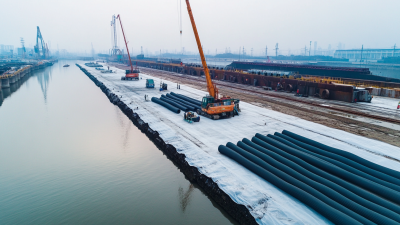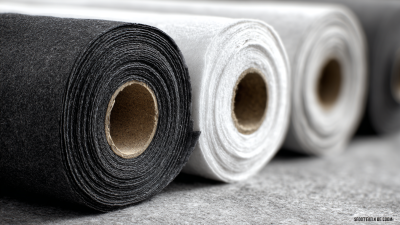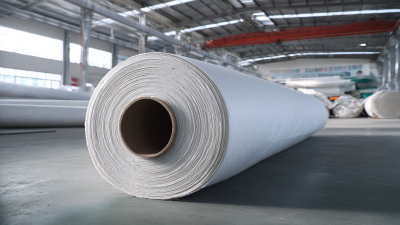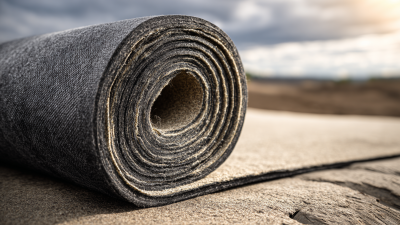Inquiry
Form loading...
- Phone
- E-mail
The construction industry is witnessing a transformative shift with the increasing adoption of innovative materials designed to enhance the performance and longevity of infrastructure projects. Among these, the "Geotextile Membrane Non Woven" has emerged as a pivotal component, offering a multitude of benefits that cater to varied construction applications. According to a recent report by MarketsandMarkets, the global geotextiles market is projected to grow from USD 9.1 billion in 2020 to USD 14.9 billion by 2025, indicating a burgeoning interest in materials that improve soil stability, drainage, and overall project efficiency.
As industry expert Dr. Jane Thompson, a leading researcher in geotextile applications, states, "The ability of Geotextile Membrane Non Woven to reinforce soil structures while providing filtration and drainage is unparalleled, making it essential for sustainable construction practices." This versatile material not only mitigates erosion but also reinforces structures, enhancing the safety and durability of roads, slopes, and foundations. With increasing environmental regulations and the need for sustainable building practices, understanding the top benefits of integrating Geotextile Membrane Non Woven into construction projects has never been more critical.
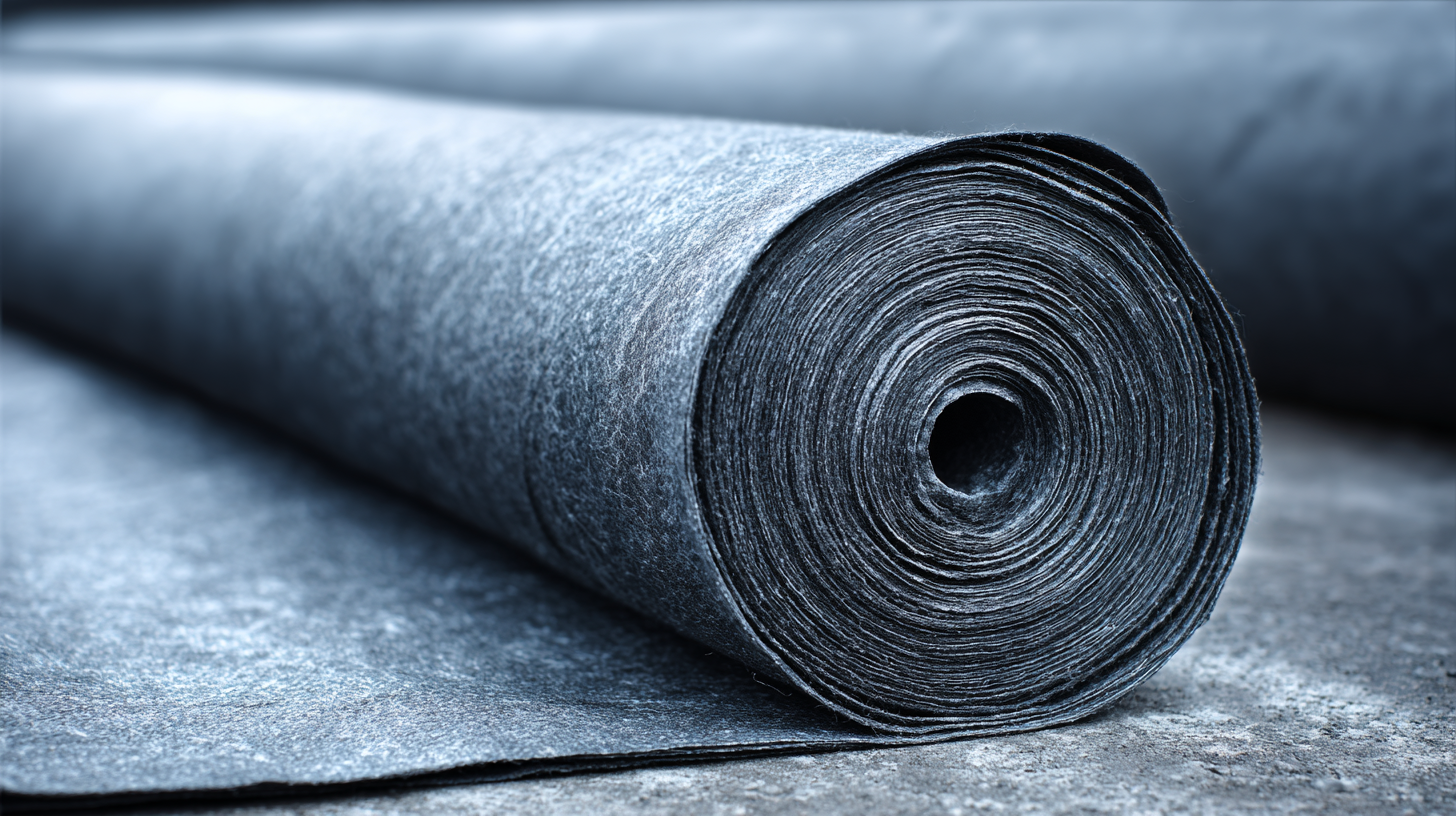
Geotextile membrane non woven materials have become invaluable in construction projects, particularly for their ability to enhance soil stabilization. These materials are designed to improve load distribution and reduce soil erosion, providing a robust foundation for various structures. By utilizing geotextile membranes, engineers can ensure that the soil retains its integrity even under heavy loads or adverse weather conditions. This stabilization is particularly essential in areas with loose or unstable soil, where traditional methods may fall short.

One significant advantage of incorporating non woven geotextile membranes is their permeability, allowing for effective drainage while simultaneously preventing the migration of soil particles. This dual function minimizes risks associated with water runoff, such as mudslides or foundation settlement. As a result, construction projects not only see improved structural longevity but also reduced maintenance costs associated with soil degradation. Overall, the use of geotextile membranes significantly bolsters site performance and ensures that construction efforts are both efficient and durable.
The use of geotextile membranes in construction projects has gained significant attention due to their cost-effectiveness. By incorporating geotextiles, projects can substantially reduce expenses related to soil stabilization, drainage, and erosion control. According to recent market analysis, geocomposite products, including geotextile-geonet and geotextile-geomembrane composites, are becoming increasingly popular due to their ability to enhance the structural integrity of road systems while minimizing long-term maintenance costs. This transition is particularly evident in infrastructure initiatives in landslide-prone areas, where the use of geosynthetics helps maintain safe and stable infrastructure.
Moreover, innovative application of geosynthetics, such as in the Char Dham Pariyojana road project, demonstrates their capacity to improve performance in unbound pavement layers. The integration of geotextiles not only aids in separating materials but also in reinforcing the pavement, thus extending its lifespan and performance under challenging environmental conditions. For instance, a recent project underlined the benefits of geogrids and geotextiles that collectively reduce construction expenses by streamlining material use and enhancing durability. As industry reports suggest, this strategic approach could significantly transform traditional construction methodologies while establishing a more cost-effective framework for future projects.
Non woven geotextile membranes play a pivotal role in enhancing drainage solutions in construction projects. These materials are engineered to manage water effectively, preventing the accumulation of excess moisture that could compromise the integrity of structures. According to a report by the Geosynthetics Institute, the use of geotextiles can improve subgrade drainage by up to 40%, significantly reducing the risk of erosion and structural failure. By allowing water to flow through while retaining soil particles, non woven geotextile membranes facilitate a well-structured drainage system that promotes longevity and stability in infrastructure projects.
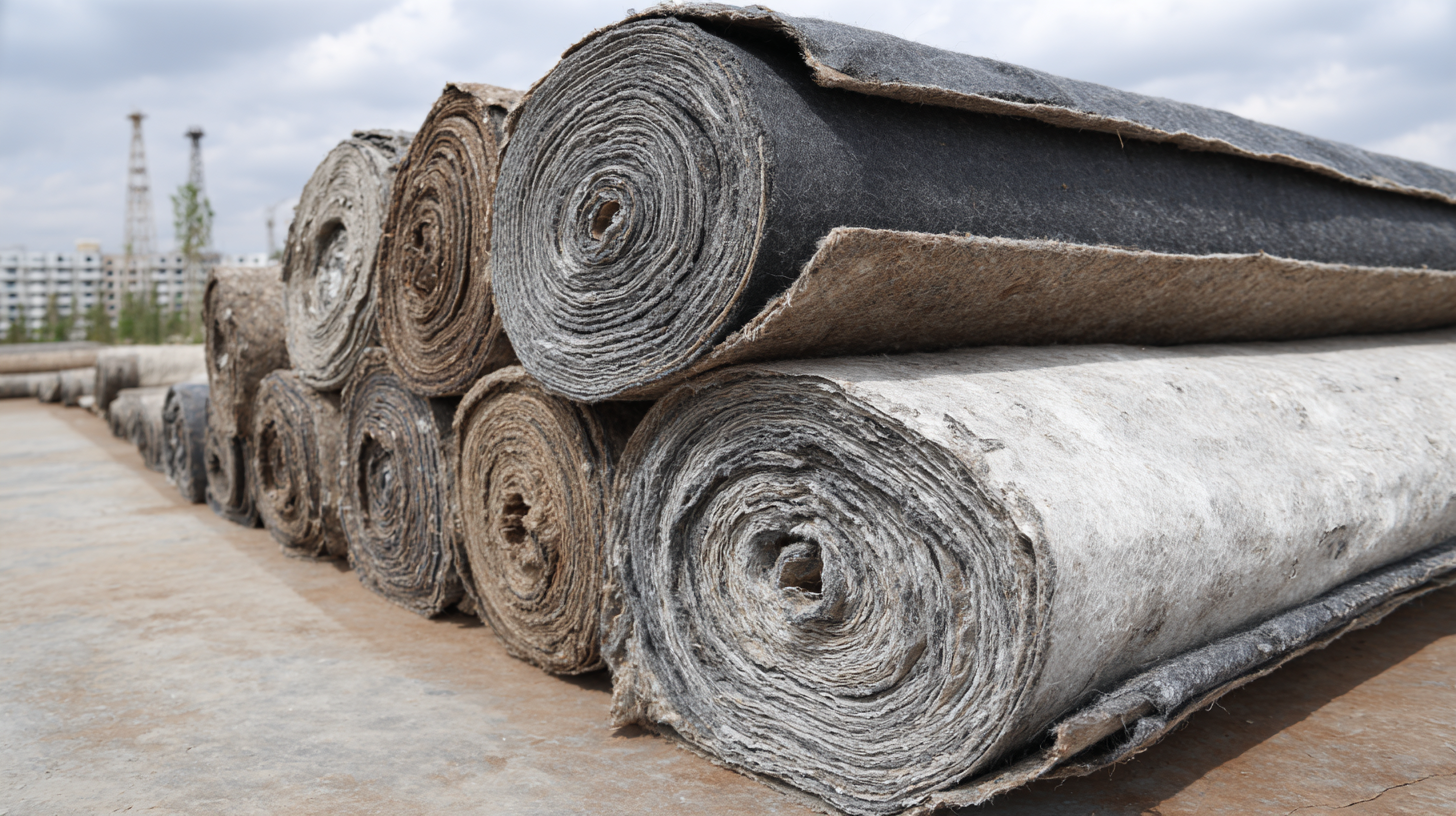
When integrating non woven geotextile membranes into your construction plan, consider the specific environmental conditions of the site. For instance, if you are dealing with heavy rainfall or high groundwater levels, it's advisable to combine geotextiles with proper drainage piping. This combination can further enhance the efficacy of your drainage system. Additionally, make sure the installation is done correctly, as improper layering can diminish the performance of these membranes.
Tip: Always conduct a thorough assessment of soil types and drainage requirements before selecting geotextile membranes. This careful consideration will ensure you choose a product that aligns with the specific needs of your project, ultimately leading to better performance and reduced maintenance costs. Regular inspections post-installation can also help identify any potential issues early on, enabling proactive management of drainage capabilities.
The use of eco-friendly geotextile membranes in construction offers significant environmental benefits that align with sustainable building practices. These membranes, which are made from recycled or biodegradable materials, help manage urban water issues by facilitating effective drainage and filtration. By reducing stormwater runoff and promoting ground infiltration, they contribute to the maintenance of natural water cycles, mitigating the impacts of flooding and erosion in urban areas.
Furthermore, incorporating geotextile membranes into construction projects supports green infrastructure initiatives. This sustainable approach not only enhances the aesthetic appeal of urban landscapes but also creates habitats for wildlife and supports biodiversity. Additionally, the manufacturing processes behind eco-friendly geotextile membranes tend to consume less energy and produce fewer emissions compared to traditional materials. Thus, using these products in construction can lead to a smaller carbon footprint, showcasing a commitment to environmental responsibility in the built environment.
| Benefit | Description | Environmental Impact |
|---|---|---|
| Erosion Control | Prevent soil erosion in construction sites and landscapes, thereby protecting ecosystems. | Reduces sediment runoff into water bodies, improving water quality. |
| Soil Stabilization | Enhance the stability of soil structures, which is critical for building foundations. | Helps maintain natural soil habitats and reduces the need for chemical treatments. |
| Water Management | Facilitates the proper drainage of water, preventing flooding and water accumulation. | Minimizes disturbance to natural water cycles and supports groundwater recharge. |
| Durability | Long-lasting performance in various environmental conditions, reducing the need for frequent replacements. | Lower resource consumption over time helps in minimizing environmental footprint. |
| Versatility | Can be used in multiple applications including roads, drainage, and landscaping. | Promotes sustainable practices by adapting to various ecological needs. |
Geotextile membranes, particularly non-woven varieties, have become increasingly popular in various construction applications due to their remarkable versatility. According to a report by MarketsandMarkets, the global geotextile market is projected to reach $10.4 billion by 2025, reflecting a substantial growth driven by their multifunctional uses. These membranes not only facilitate drainage and filtration but also provide soil stabilization and erosion control, making them essential in road construction, landfills, and coastal protection projects.
One of the key advantages of non-woven geotextiles is their ability to enhance drainage and moisture management. With high hydraulic conductivity, they allow water to pass through while filtering out soil particles, which is particularly beneficial in applications such as retaining walls and trench drains. For construction professionals, using geotextile membranes can extend the lifespan of infrastructure by preventing water-related damage and ensuring a solid foundation.
**Tips:** When selecting a geotextile membrane for your projects, consider the specific needs of the application, such as permeability and tensile strength. Additionally, ensure that the installation is performed correctly to maximize effectiveness. Regularly inspect the membranes in place to detect any potential issues early on, which can help maintain the integrity of your construction.
This bar chart illustrates the top five benefits of using non-woven geotextile membranes in construction projects. The data showcases the importance of each application, highlighting their effectiveness in areas such as soil stabilization, erosion control, drainage solutions, separation layers, and landscape applications.

